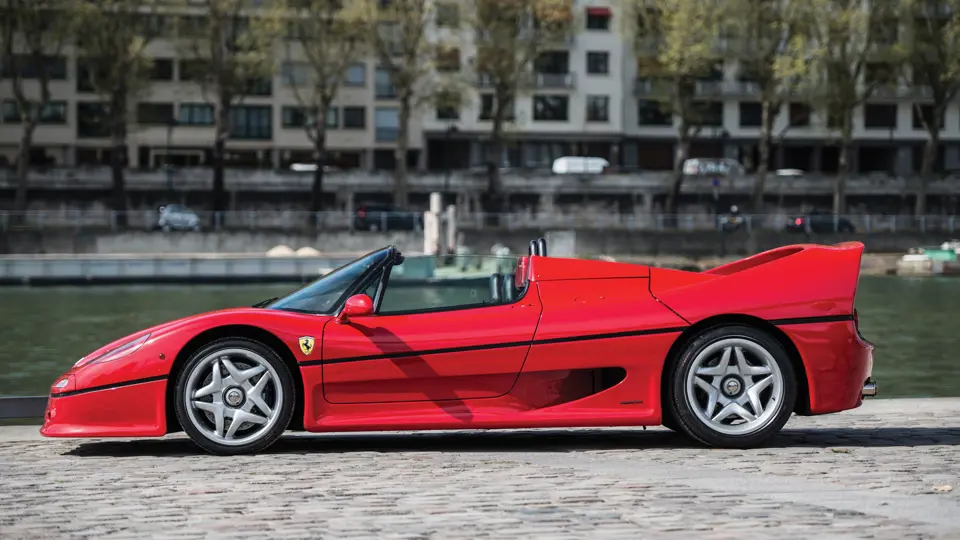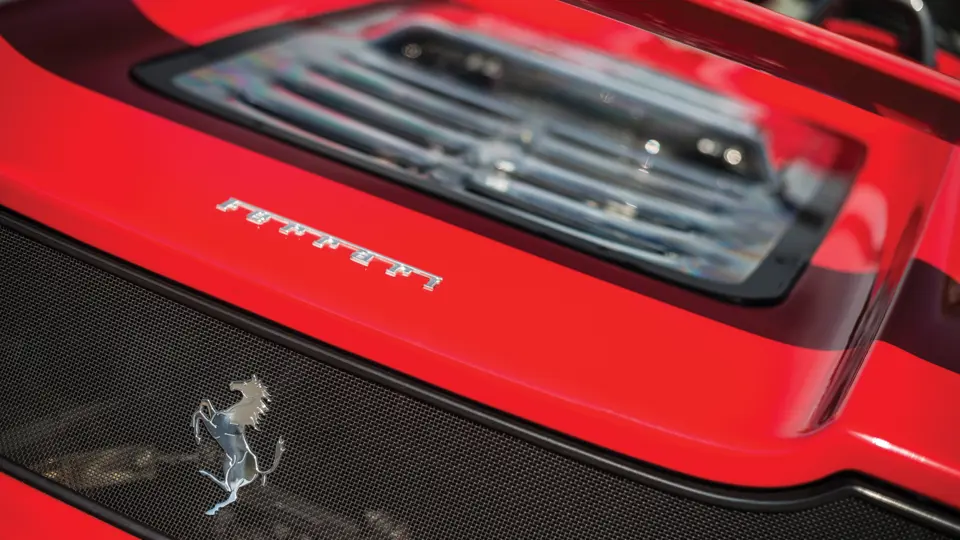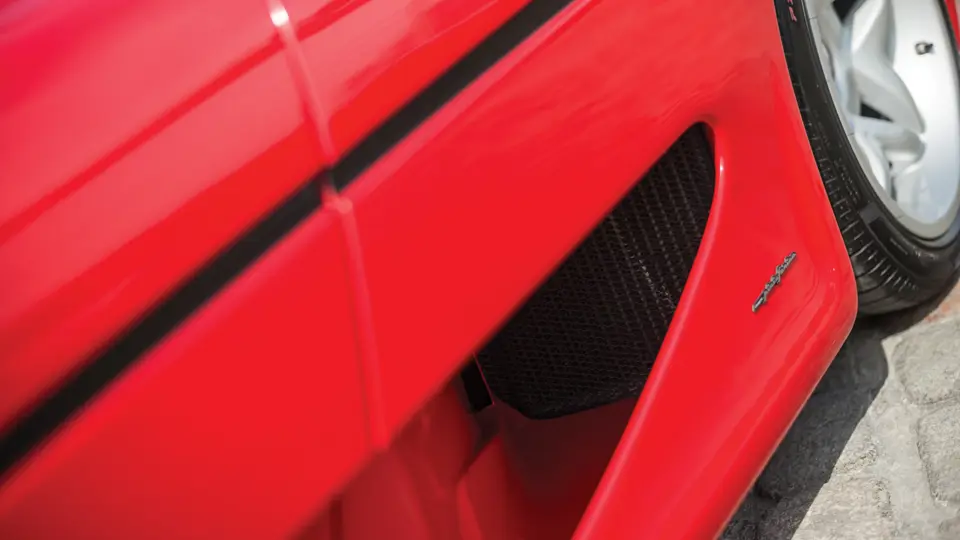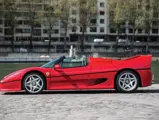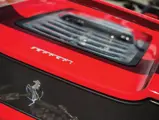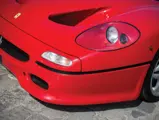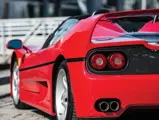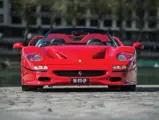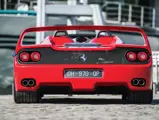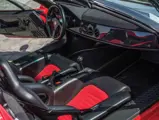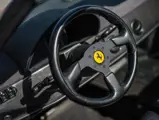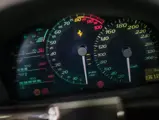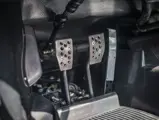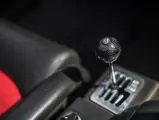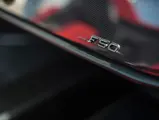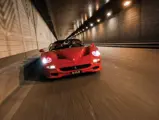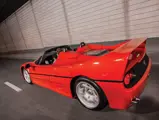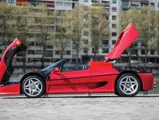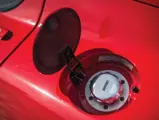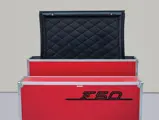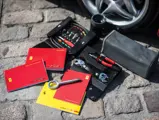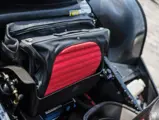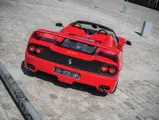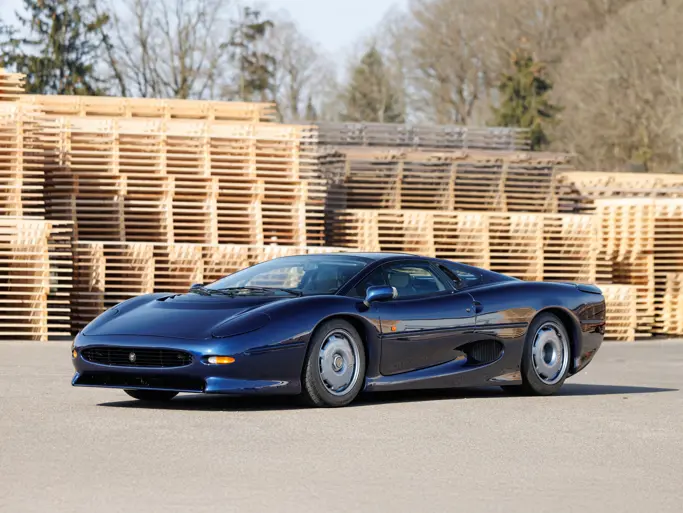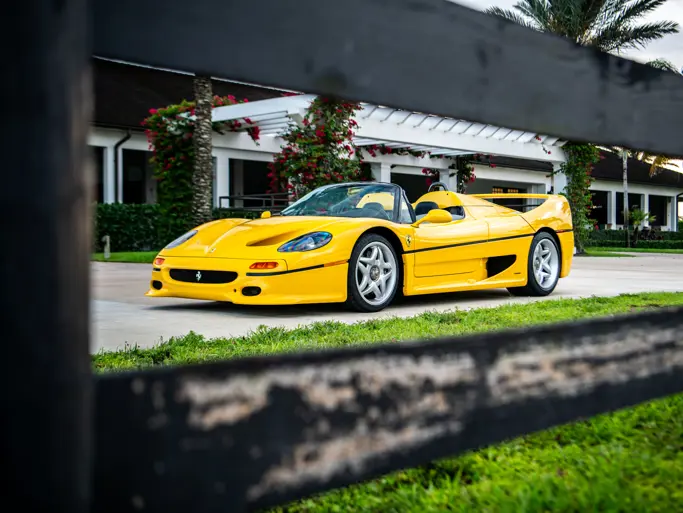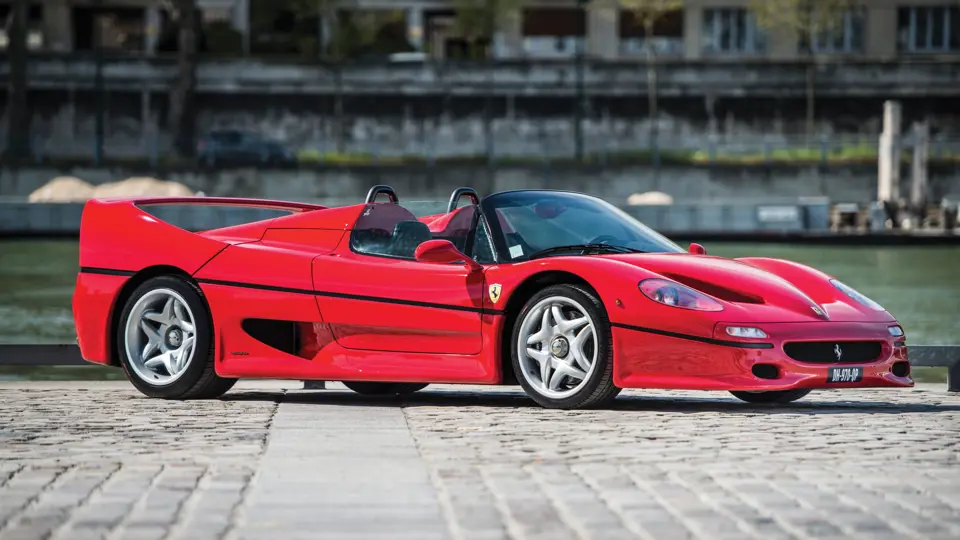
1996 Ferrari F50
{{lr.item.text}}
€1,232,000 EUR | Sold
{{bidding.lot.reserveStatusFormatted}}
- The 215th of 349 examples produced
- Recent service by Ch. Pozzi; presented in stunning condition
- Complete with books, tools, and luggage
- Ferrari’s iconic 50th anniversary supercar
- La numero 215 di 349 prodotte
- Tagliando eseguito di recente da Ch.Pozzi; presentata in condizioni eccezionali
- Corredata di libretti, attrezzi e bagagli
- L'iconica Supercar del 50esimo anniversario Ferrari
520 bhp, 4,698 cc V-12 engine with Bosch Motronic 2.7 engine management, six-speed manual transmission, four-wheel independent suspension with coil springs and unequal length wishbones, and four-wheel hydraulic disc brakes. Wheelbase: 2,580 mm
520 cv, motore V-12 da 4.698 cc con centralina Bosch Motronic 2.7, trasmissione manuale a sei velocità, quattro sospensioni indipendenti con molle elicoidali, freni a disco a comando idraulico su tutte e quattro le ruote. Passo, 2.580 mm
The goal of Ferrari’s F50, which was built on the culmination of four years of development and fifty years of success in motorsport, was to offer customers an experience as close to a Formula One car as possible but within the familiarity of a road-legal platform. The car was presented to the public for the first time at the 63rd annual Geneva Motor Show, and Luca di Montezemolo, Piero Lardi Ferrari, Sergio Pininfarina, and Niki Lauda were all on hand at the unveiling, illustrating the monumental importance of this new model to the history of Ferrari.
The F50 was propelled by a 4.7-litre normally aspirated V-12 with five valves per cylinder, which was a first for a road going Ferrari V-12. It was derived directly from the powerplant that Ferrari used in the 1990 F1 season, and it produced 520 horsepower at an earth-shaking 8,000 rpm, but the 436-pound engine itself was capable of reaching over 10,000 rpm. The six-speed longitudinal gearbox, complete with a limited-slip differential, was fitted behind the engine, between which the oil tank was mounted for the dry-sump engine lubrication system. This layout was reminiscent of the one used in Ferrari’s contemporary Formula One cars.
Ferrari placed monumental attention to detail on the car’s chassis, which was made entirely of Cytec aerospace carbon fibre and tipped the scales at just 225 pounds. The F50’s rubber bladder fuel tank was housed within the chassis, behind the driver and in front of the engine, which was another innovation inspired from the aircraft industry. Massively drilled and ventilated disc brakes were fitted, and Brembo supplied the four-piston brake callipers.
The interior of the F50 featured few creature comforts, as Ferrari wanted the driver to fully concentrate on handling the most powerful machine to ever leave their factory. The instrument panel featured a tachometer and speedometer, as well as fuel, oil, and water temperature and oil pressure gauges, which were all controlled by a microcomputer and displayed to the driver by LCD. The throttle, brake, and clutch pedals were all fully adjustable and drilled to further maximise weight reduction. The gated gearshift was traditional Ferrari; although, in the interest of weight savings, even the gear knob and lever were made of lightweight composite materials.
Of course, Ferrari’s fanatical attention to detail and weight reduction meant massive dividends in terms of performance. The F50’s top speed was purportedly 325 km/h, and the 0–100 km/h dash required just 3.7 seconds. Keeping one’s foot on the accelerator pedal would bring the F50 to a standing mile time of 30.3 seconds. However, all this performance wouldn’t be available to every person with the appropriate funds to purchase Ferrari’s newest supercar. Only 349 examples were made, one less than what Montezemolo believed the market demanded and just over a quarter of total F40 production.
The F50 presented here, chassis number 106570, was the 215th example built. It was completed in October 1996 and finished in traditional Rosso Corsa (FD-80) over a Nero and Rosso (8500) interior. Once complete, the car was delivered new to official Ferrari dealer Forza Torino in Italy. It was then purchased on 19 November by Giancarlo Pronotto, of Torino, and it has remained in Europe ever since. Forza Service performed the first service, at 11,170 kilometres, in November 1998 and a second one the following year, when the car had 15,443 kilometres showing on its odometer. The car has been routinely maintained by Forza and was serviced again in March 2003 at 21,499 kilometres. In 2007, the car was then serviced by GTO Motors, with 31,706 kilometres on its odometer. Most recently, the car was then presented to Simon Furlonger Specialist Cars in May 2014 for another routine service. Currently, the F50 has been driven just over 36,000 kilometres since the day it left the factory, and it has clearly been well-maintained throughout its entire life, as it continues to show beautifully. It should be noted that in addition to retaining its original books, tool kit, luggage, and roof panel transport case, it is also fitted with a sports exhaust to emphasise the thunderous V-12.
The F50 is undoubtedly one of the most iconic vehicles created in the 1990s, as it celebrates 50 years of Ferrari’s continuous development and integration of road and racing technology. It was the supercar that gave Ferrari’s best customers the opportunity to experience similar levels of performance and exhilaration previously reserved for the company’s Formula One drivers.
L'obbiettivo della Ferrari F50, costruita dopo quattro anni di sviluppo e cinquanta di successi nelle corse, era quella di offrire ai suoi clienti un'esperienza di guida il più vicino possibile a quella di una Formula 1, ma con la praticità di un'auto stradale. La macchina fu presentata al pubblico per la prima volta al 63esimo Salone di Ginevra e Luca di Montezemolo, Piero Lardi Ferrari, Sergio Pininfarina e Niki Lauda erano presenti al lancio, rimarcando la monumentale importanza di questo nuovo modello nella storia della Ferrari.
La F50 era spinta da un V-12 aspirato di 4,7 litri con cinque valvole per cilindro, una caratteristica offerta per la prima volta su una Ferrari stradale. Il motore derivava direttamente da quelli usati nella stagione 1990 di Formula 1 e produceva 520 cavalli a ben 8,000 giri, ma il motore da 197 kg da solo era capace di 10.000 giri. La trasmissione a sei rapporti montata longitudinalmente dietro il motore era accoppiata con il differenziale autobloccante, e fra questi era montato il serbatoio dell'olio che alimentava il sistema di lubrificazione a carter secco. Questa configurazione era usata per le Ferrari F1 di quegli anni.
La Ferrari dedicò una grande attenzione ai dettagli del telaio, che era costruito interamente in fibra di carbonio fornita dalla Cytec Aerospace e pesava soltanto 102 kg. Il serbatoio flessibile della F50 era alloggiato all'interno dell'abitacolo, dietro la posizione di guida e davanti al motore, il che costituiva un'altra innovazione derivata dall'industria aeronautica. La macchina fu inoltre dotata di freni a disco alleggeriti e ventilati e la Brembo fornì le pinze a quattro pistoncini.
L'interno della F50 offriva poco comfort, dato che la Ferrari voleva che il pilota si concentrasse sulla guida della macchina più potente mai uscita dalla sua Fabbrica. Il quadro strumenti era costituito da un tacheometro e da un contagiri, così come gli indicatori del carburante, temperatura e pressione dell'olio ed acqua, tutte controllate da un microcomputer che le comunicava al pilota tramite uno schermo LCD. I comandi del gas, della frizione e del freno erano regolabili e alleggeriti tramite fori per ridurre il peso complessivo. Il selettore del cambio a griglia era tradizionale Ferrari; sempre con l'intento di ridurre il peso, anche il pomello del cambio era fatto di leggeri materiali compositi.
Senza dubbio, l'attenzione maniacale della Ferrari ai dettagli ed alla riduzione di peso, non fecero altro che aumentare i numeri riguardanti le prestazioni. La velocità massima della F50 era dichiarata essere di 325 km/h e lo scatto 0-100 era completato in 3.7 secondi. Tenendo il pedale sull'acceleratore si portava la F50 a percorrere il miglio da fermo in 30.3 secondi. Tuttavia, queste prestazioni non erano disponibili per tutti coloro che disponessero dei fondi necessari per l'acquisto dell'ultima supercar Ferrari. Solo 349 esemplari furono costruiti, uno in meno rispetto a quello che secondo Montezemolo era la richiesta del mercato e poco più di un quarto della produzione totale di F40.
La F50 qui presentata, numero di telaio 106570, fu l'esemplare numero 215. Fu completato nell'ottobre 1996 e rifinito nel tradizionale Rosso Corsa (FD-80) con un intero Nero e Rosso (8500). Una volta completata, la macchina fu consegnata nuova al concessionario ufficiale Ferrari Forza Torino. Fu poi acquistata il 19 novembre da Giancarlo Pronotto di Torino e l'auto è rimasta i Europa sin da allora. Fu esposta sullo stand dell’A.C.I. al salone di Torino nel 1998. Forza Service eseguì il primo tagliando a 11,170 chilometri, nel novembre 1998 e un secondo l'anno successivo, a 15,443 km segnati sull'odometro. L'auto è stata poi manutentata continuamente dalla Forza e subì un altro tagliando nel marzo 2003 a 21,499 km. Nel 2007 e 31,706 kilometri l'auto ha subito l'ordinaria manutenzione presso GTO Motors. Più recentemente la macchina è stata inviata a Simon Furlonger Specialist Cars nel maggio 2014 per un altro tagliando di routine. Al momento, questa F50 ha percorso poco piu di 36.000 kilometri dal giorno in cui è uscita dalla fabbrica, ed è stata chiaramente ben manutentata per tutto il corso della sua vita e lo dimostra magnificamente. Da notare è che oltre ai suoi libretti originali, set di attrezzi, valigie e custodia per il tetto asportabile, è fornita anche di uno scarico sportivo che enfatizza il rombo fragoroso del motore V-12.
La F50 è indubbiamente una delle automobili più iconiche prodotte negli anni '90 e celebra i 50 anni di costante sviluppo ed integrazione della tecnologia derivata dalle competizioni per le auto stradali. Essa fu la supercar che diede ai clienti Ferrari l'opportunità di sperimentare le prestazioni e l'emozione prima riservata solo per i piloti di Formula Uno della Ferrari.
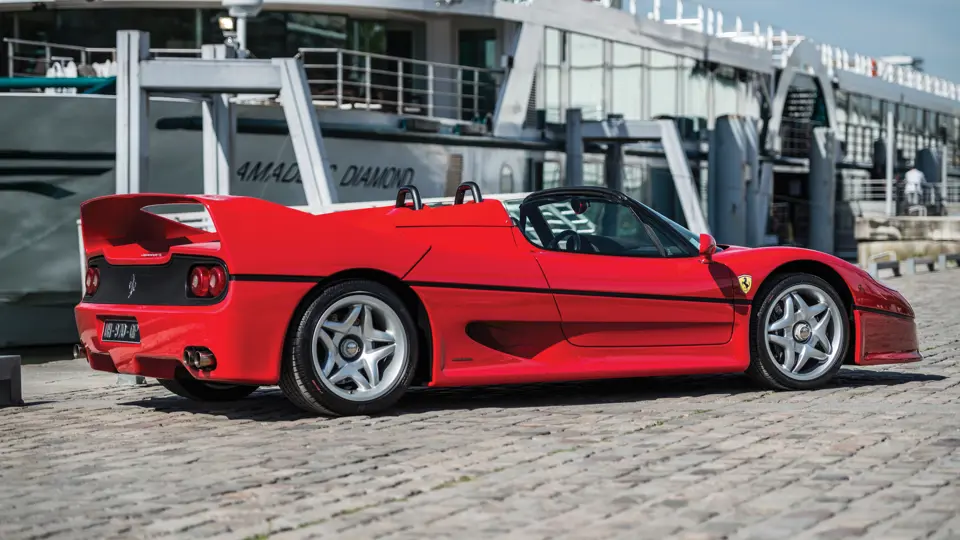
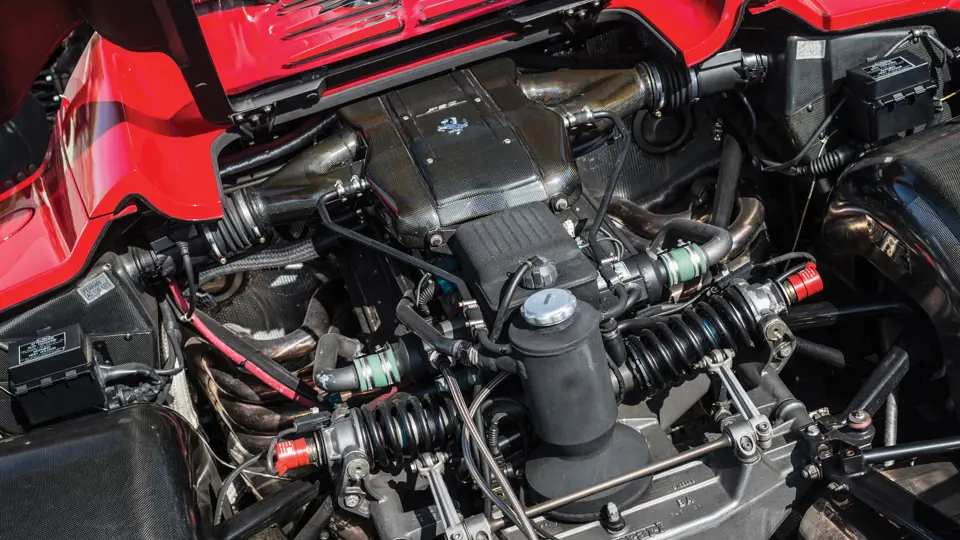
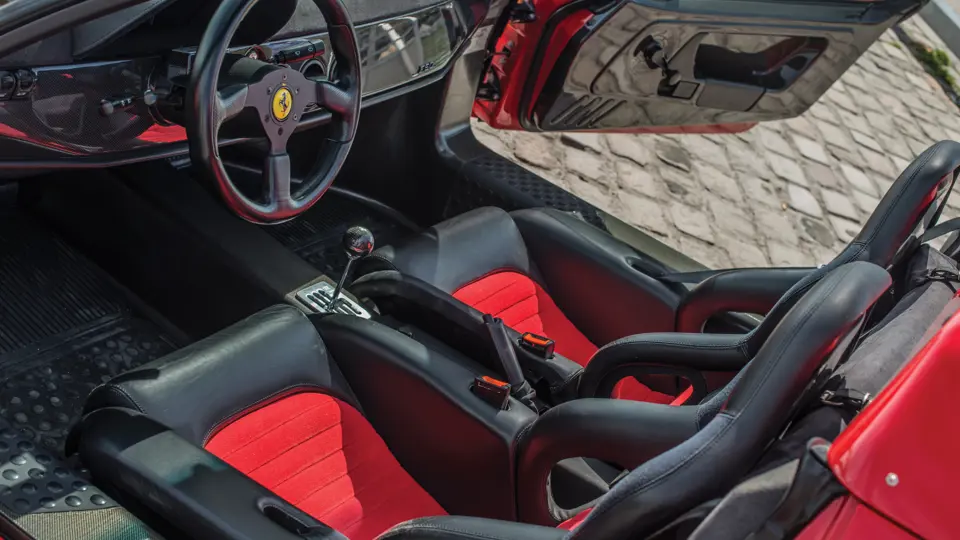

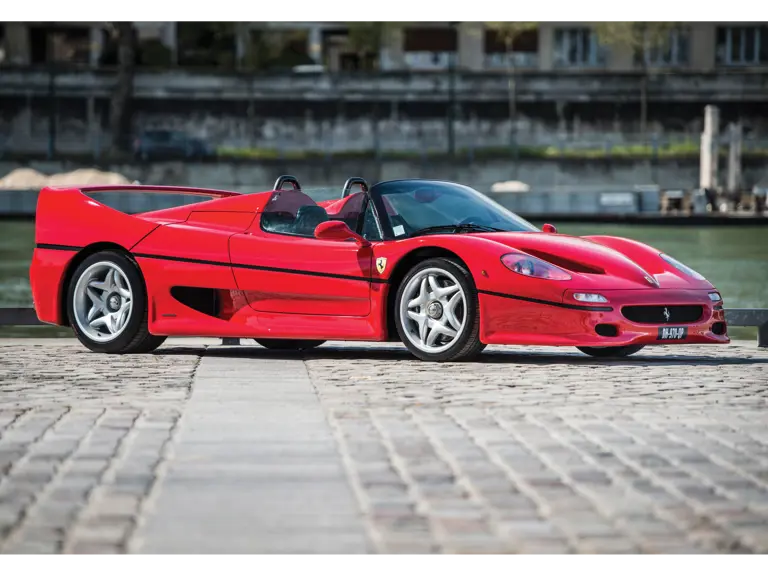
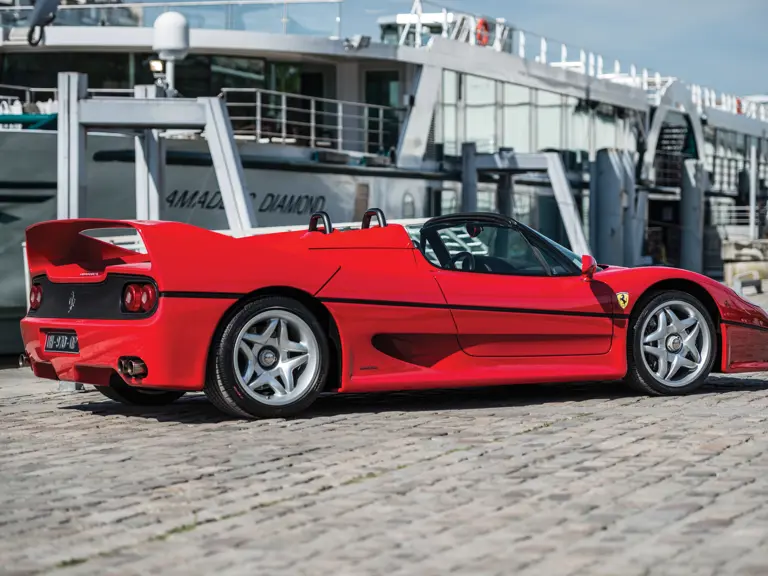
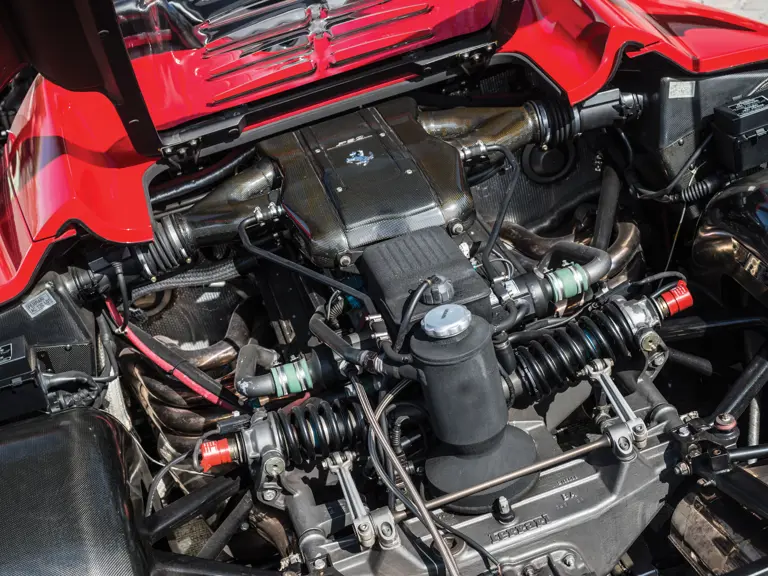

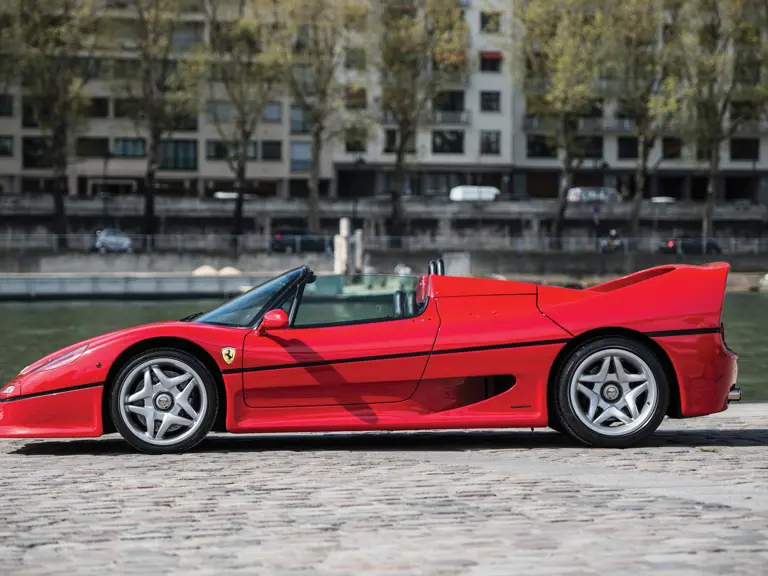
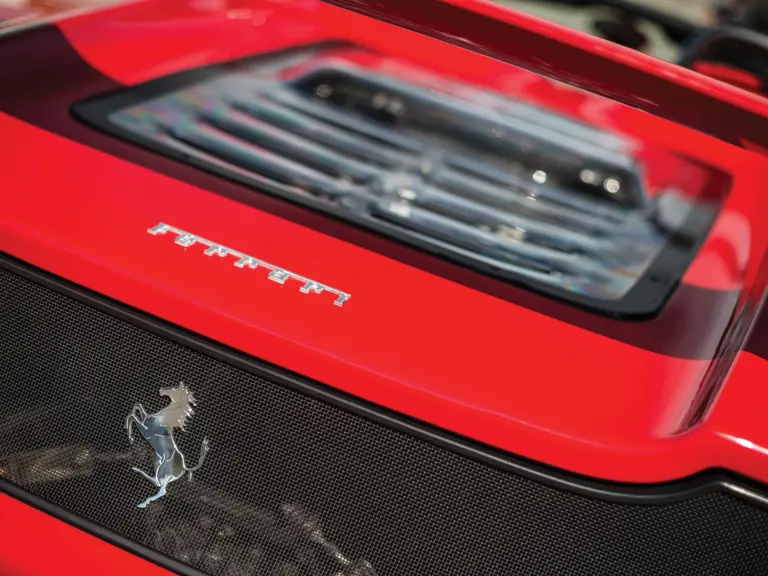

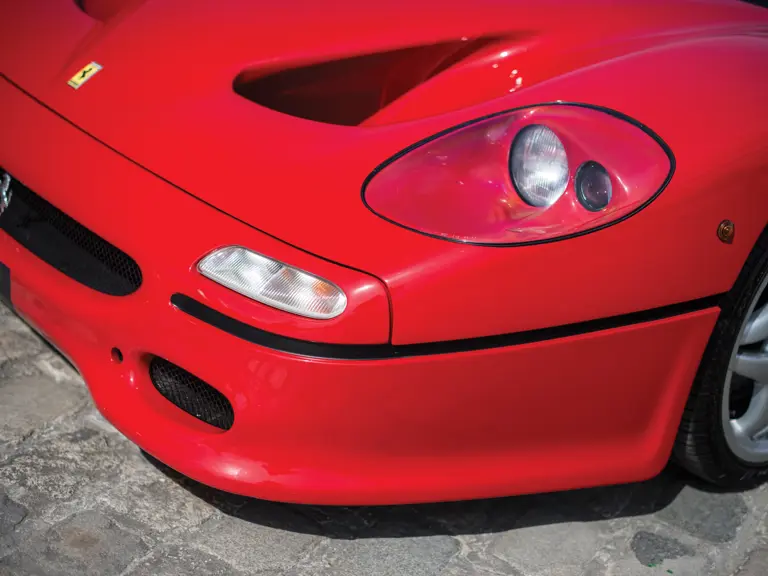
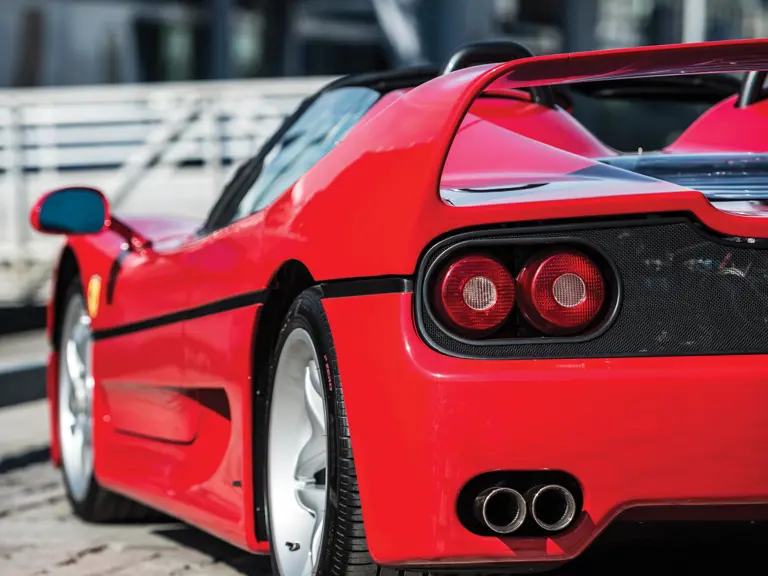
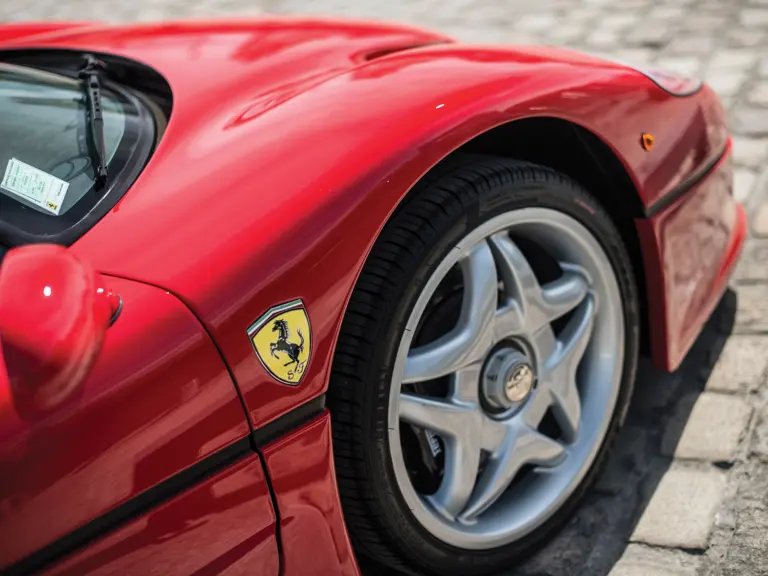
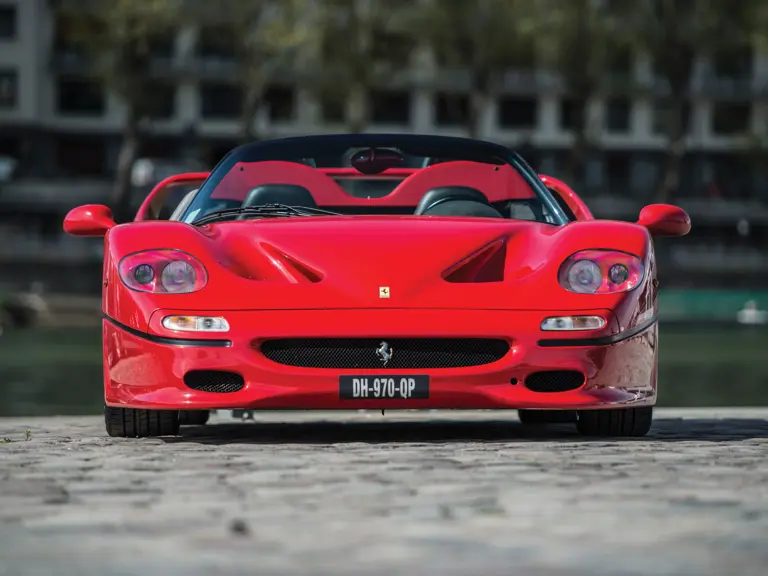
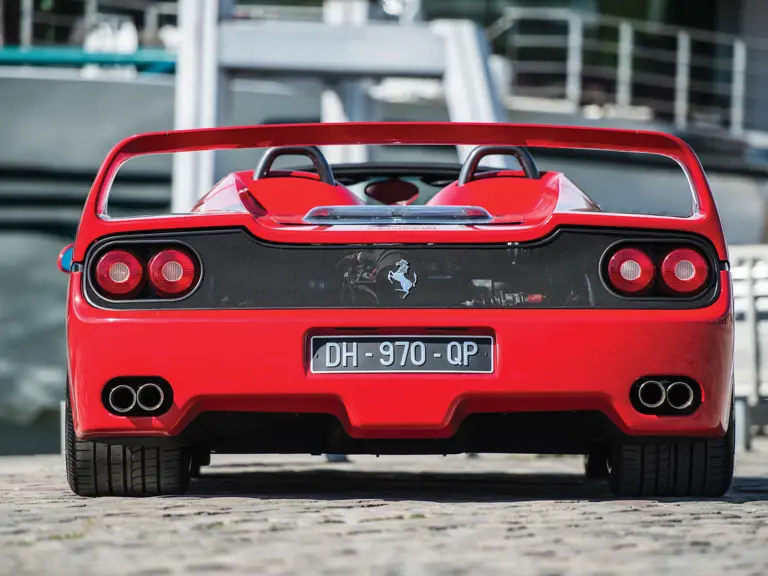
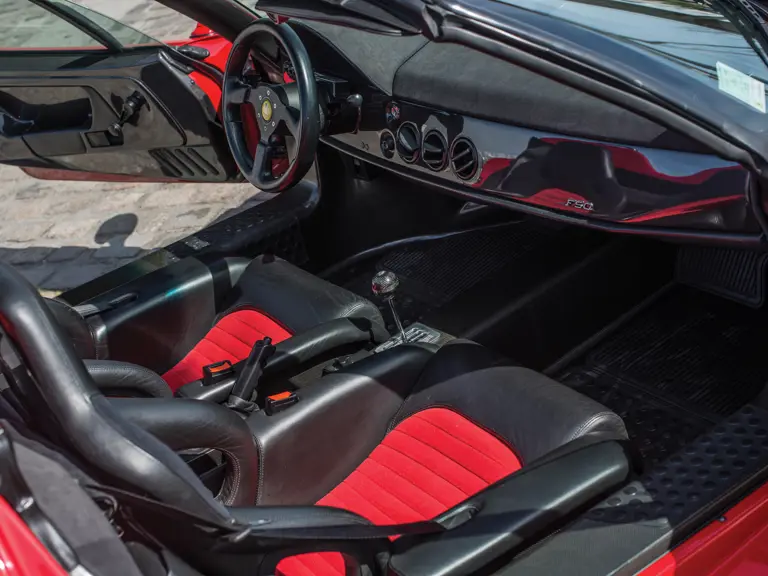
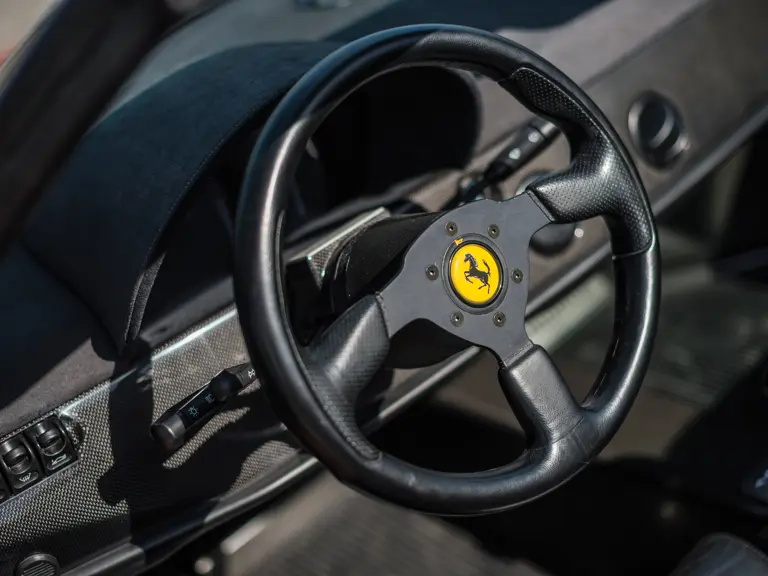
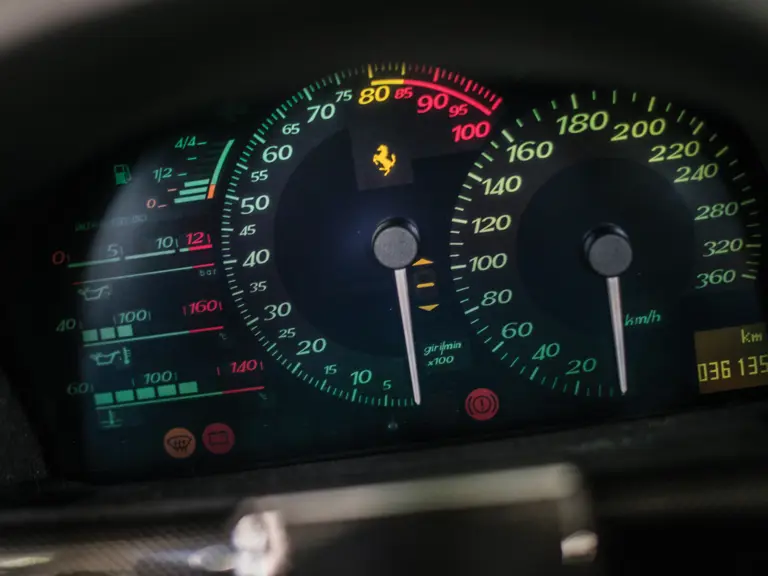
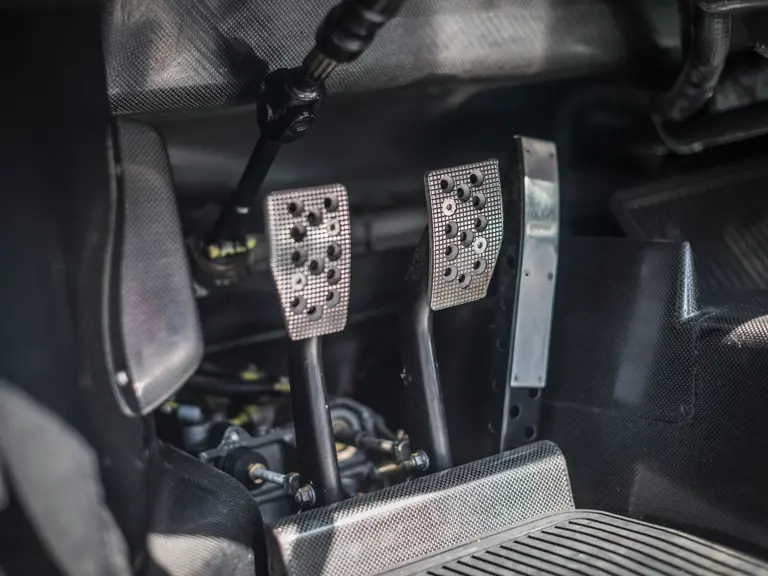
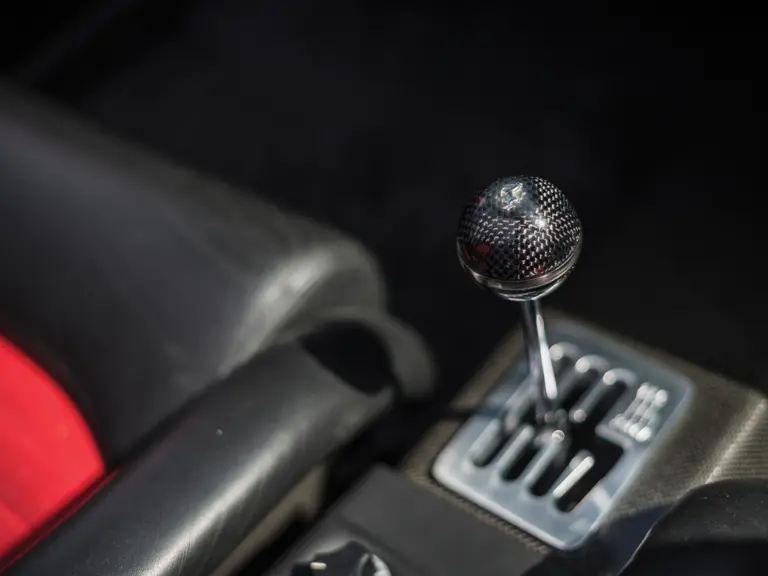
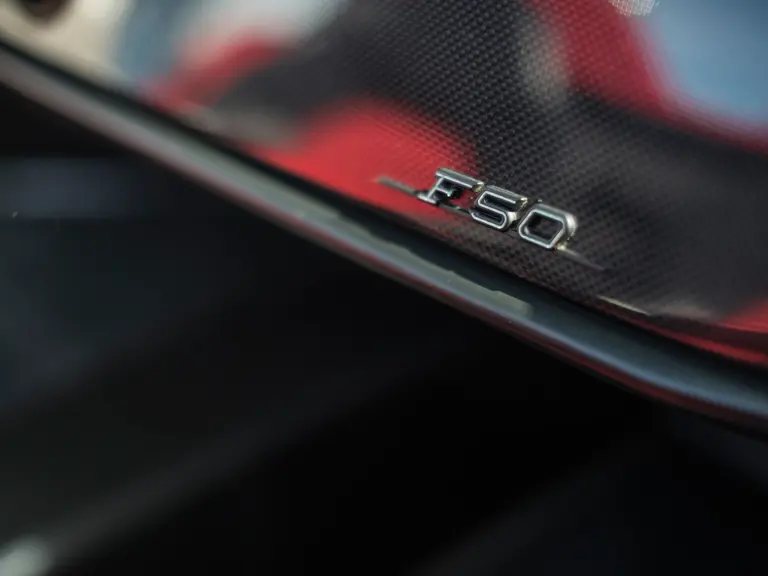
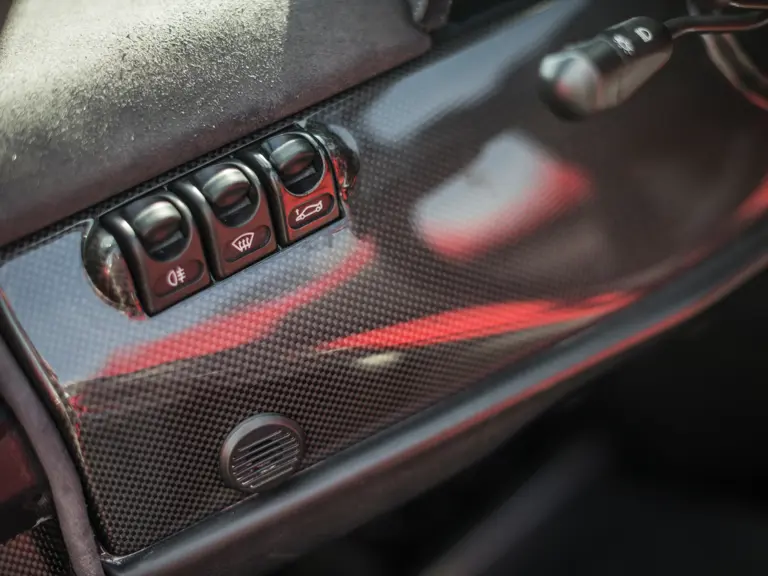
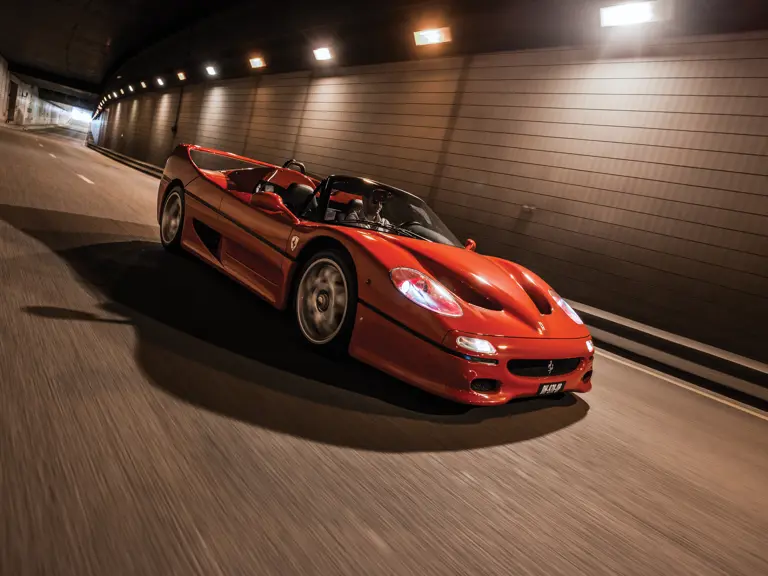

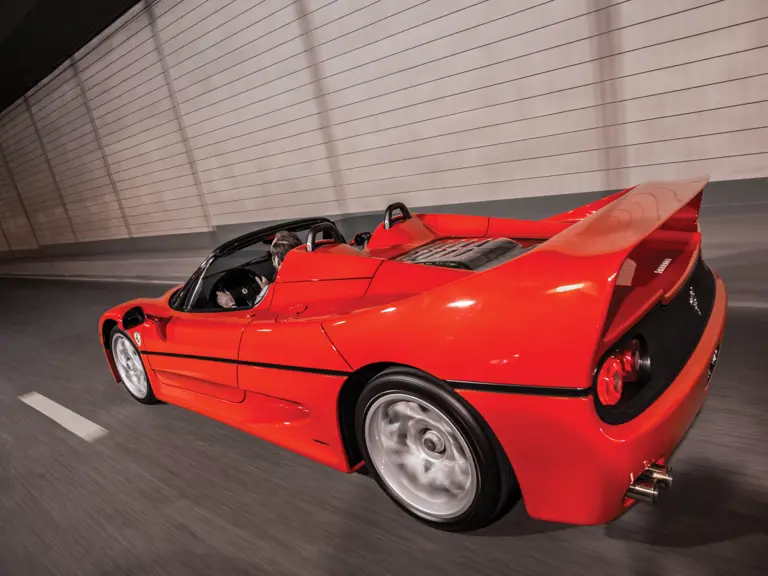

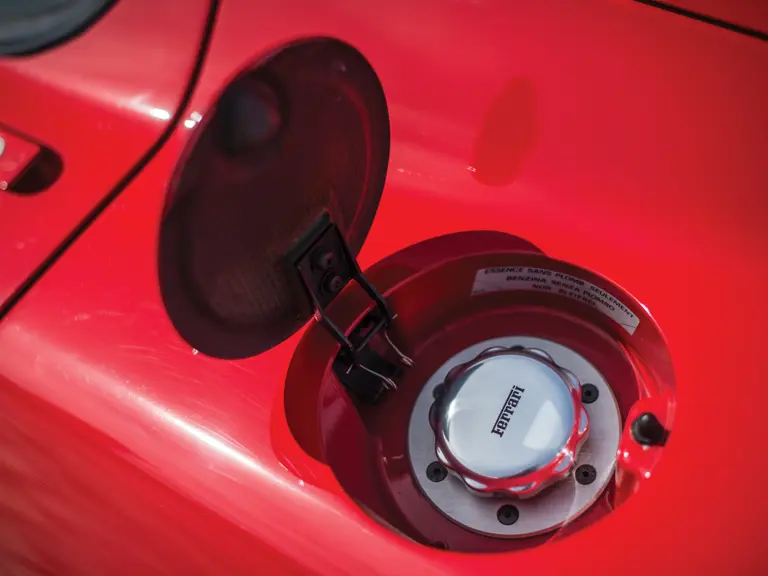
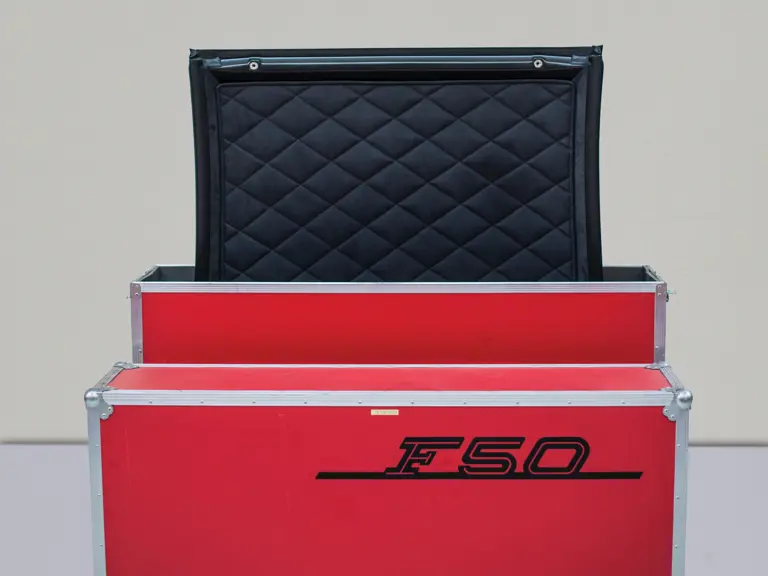
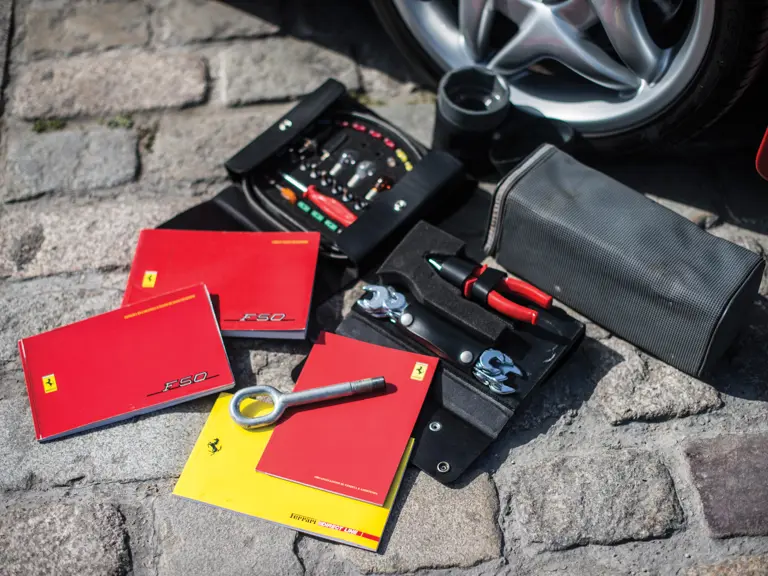
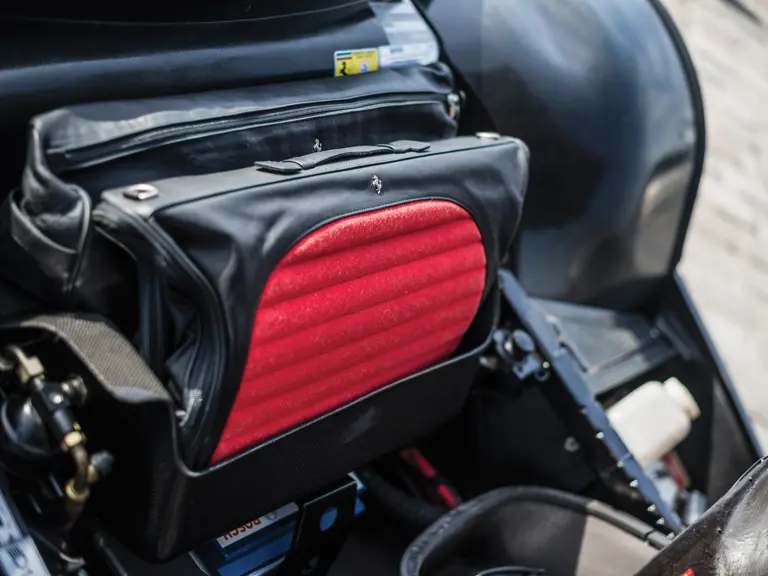
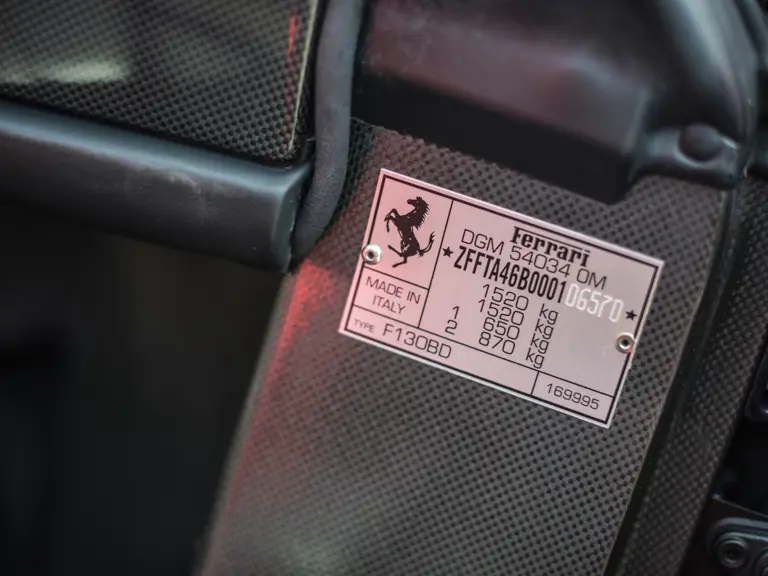
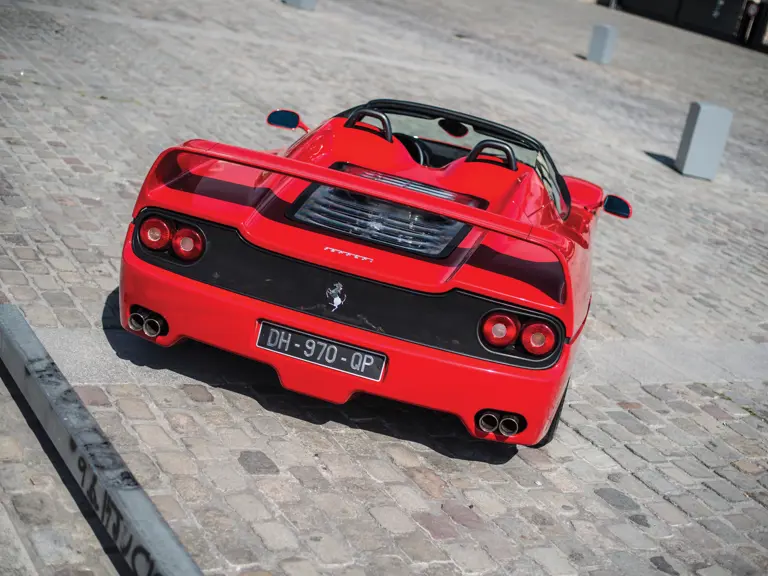
 | Cernobbio, Italy
| Cernobbio, Italy
